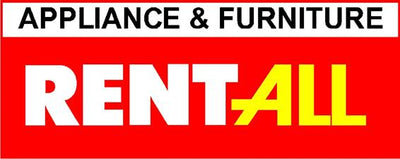Purchasing tires might seem as simple as choosing the right size for your vehicle. However, there's so much more to consider to ensure safety, optimize vehicle performance, and get the best value for your money.
This blog post provides a comprehensive guide to everything you need to know when purchasing tires. Buckle up as we take you through the essential facts and tips for making this considerably crucial task a smooth ride.
How to Know When You Need New Tires
Before diving into the specifics of tire buying, it's essential to recognize when your current tires need replacement. Here are a few signs that indicate it's time for new rubber:
- Tread Depth: The most straightforward way to check your tire's condition is by inspecting the tread depth. A general rule of thumb is to replace tires when the tread depth reaches 2/32 of an inch.
- Uneven Wear: If you notice irregular wear patterns on your tires, it could indicate an alignment issue or improper inflation. Either way, you will likely need to replace them.
- Age: Even if your tires appear in good shape, consider their age. Regardless of their condition, you should replace tires older than six years for safety reasons.
- A combination of these factors may often suggest the need for tire replacement. Always err on the side of caution when considering safety.
What Type of Tire Does Your Car Need?
Choosing the right tire type for your vehicle is crucial. The kind of tire you need depends on your driving habits, the climate in your region, and your vehicle's specifications. There are several types, including:
- All-Season Tires: Suitable for most driving conditions, all-season tires offer a balanced performance throughout the year.
- Summer Tires: These tires thrive in warm and dry conditions. Summer tires provide excellent handling and grip.
- Winter Tires: Ideal for cold and snowy climates, winter tires offer enhanced traction in adverse weather.
- Performance Tires: These tires prioritize handling and responsiveness for sports cars and high-performance vehicles.
Selecting the correct type of tire for your driving environment and style can significantly impact your vehicle's performance and safety.
5 Key Tire Specifications
When selecting tires, it's essential to consider the following key specifications:
- Noise: Pay attention to the tire's noise rating, which indicates how quiet or noisy it is. Lower noise ratings signify softer tires, providing a more comfortable ride.
- Handling: Handling characteristics determine how your car responds to steering inputs. High-performance and sporty cars benefit from tires with excellent handling capabilities.
- Temperature: The tire's temperature rating indicates its ability to dissipate heat. A higher temperature rating is essential for vehicles with heavy loads or prolonged high-speed driving.
- Traction: Traction ratings reveal a tire's grip on wet surfaces. Look for tires with a good traction rating to ensure safety in damp or rainy conditions.
- Treadwear: Treadwear ratings give you an idea of how long you can expect the tires to last. Higher treadwear ratings generally mean longer-lasting tires.
Understanding these specifications can help you choose the right tires that match your specific driving needs and the conditions you encounter.
How to Determine the Tire Size
Understanding your tire's size is crucial when purchasing a new set. The best place to determine the correct tires for your vehicle is the sticker on the inside door jam of the driver-side door. You’ll find tire size, loading information, and proper tire inflation information.
In the absence of the tire information sticker, you can find this information on the sidewall of your current tires. It will be a combination of numbers and letters. For example, a typical tire size might look like this: P215/65R16.
- P: Stands for "P-metric," indicating it suits passenger vehicles.
- 215: Represents the tire's width in millimeters.
- 65: Denotes the aspect ratio, indicating the height of the sidewall as a percentage of the tire's width.
- R: Indicates that it's a radial tire.
- 16: Represents the wheel diameter the tire fits (in inches).
Selecting the correct tire size ensures that your tires fit your vehicle correctly, allowing optimal performance and safety.
The Importance of Insuring Your Tires Are Similar or the Same
Consistency in tire type, size, and specifications across all four wheels is crucial for your vehicle's safety and performance. Mismatched tires can lead to issues with handling, stability, and braking. It's vital to replace all four tires simultaneously or ensure that the new tire matches the remaining ones.
Tires at Appliance & Furniture RentAll: Benefits and Considerations
Appliance & Furniture RentAll is a trusted provider of tires, offering numerous advantages to customers. Here are a few reasons to consider getting your tires from Appliance & Furniture RentAll:
Quality Assurance: We ensure that all tires meet strict quality, durability, and performance standards.
Affordable: We offer flexible weekly or monthly payment plans, helping you get the tires you need without breaking the bank.
Expert Advice: Our can help you choose the right tires for your vehicle, ensuring you get the best fit.
Convenience: Our locations are conveniently located, making it easier to replace your tires without excessive travel.
Make an Educated Decision
When purchasing new tires, staying well-informed is essential. Knowing when to replace your tires, select the right type, and ensure the best fit helps you make a safe choice.
Appliance & Furniture RentAll provides a reliable source for quality tires with added convenience. Browse our collection of rent-to-own tires.
You're now ready to confidently navigate the world of tire buying, ensuring a smooth and safe journey with your next purchase. Reach out today with any questions, and we would be happy to help you with your tire needs.

